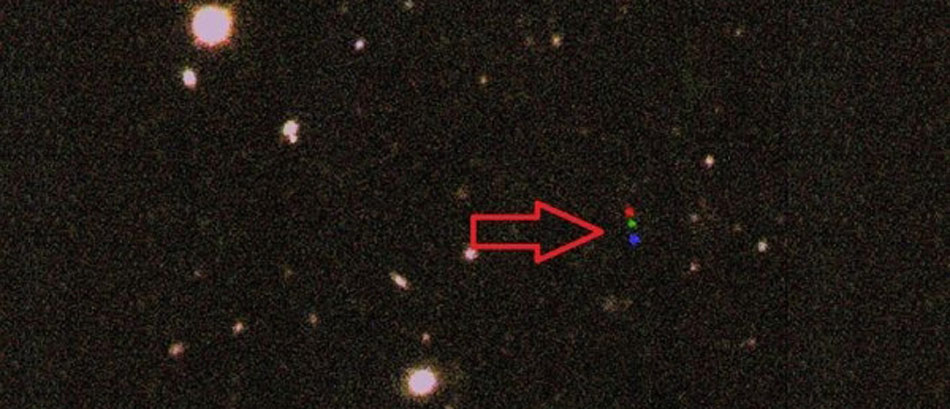2012 VP113

Three images, showing dwarf planet 2012 VP113 in red, then green, then blue, were combined to reveal its path across the night sky (Image: Scott S. Sheppard, Carnegie Institution for Science).
2012 VP113, also known by its nickname "Biden", is a trans-Neptunian object (TNO) with a diameter of between 300 and 1,000 kilometers, possibly large enough to be a dwarf planet. It is located at the inner margin of the Oort Cloud, some 80 times further from the Sun than is Earth. It is the most distant object known to be orbiting the Sun, at a distance of roughly 12 billion kilometers (7 billion miles), and is only the second object (the other is Sedna) to have been discovered in this far-off region, although a a very large population is suspected to exist here. Believed to be composed of rock and various ices, it has a pinkish hue.
2012 VP113 was discovered in 2012 by astronomers Chad Trujillo and Scott Sheppard.
Intriguingly, the pattern of VP113's orbit appears to hint at the existence of another, much larger world – a super-Earth more than 10 times the mass of Earth lying much further from the Sun. Astronomer Scott Sheppard, at the Carnegie Institution for Science, Washington DC, who found the new object with colleague Chad Trujillo, said: "If you took a super-Earth and put it a few hundred astronomical units out, the gravity could shepherd this new object into the orbit it has."
Objects orbiting at the distance of 2012 VP113, in the inner Oort cloud, are useful as probes of the early Solar System. That's because they lie too far away to be perturbed by the giant planets Jupiter, Saturn, Uranus, and Neptune, but too close to the Sun to be affected by the gravity of other stars inthe solar neighborhood – so their orbits and behavior are thought to be almost unchanged since they first formed.


